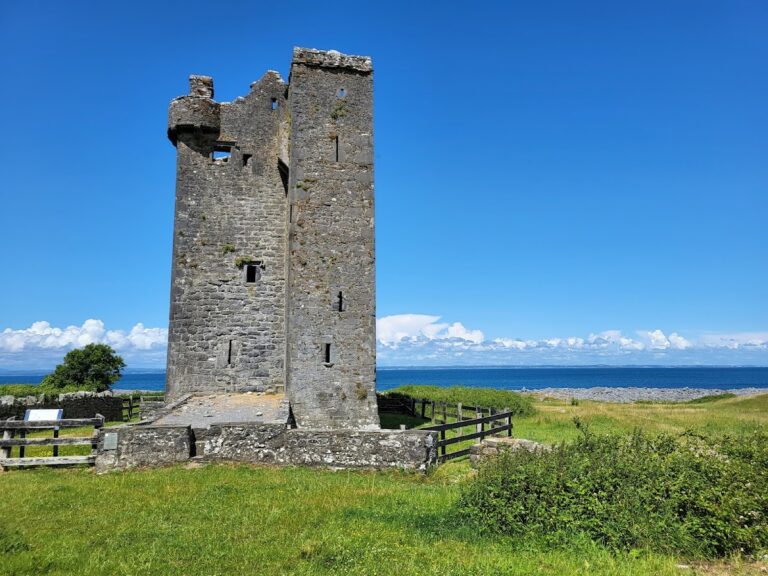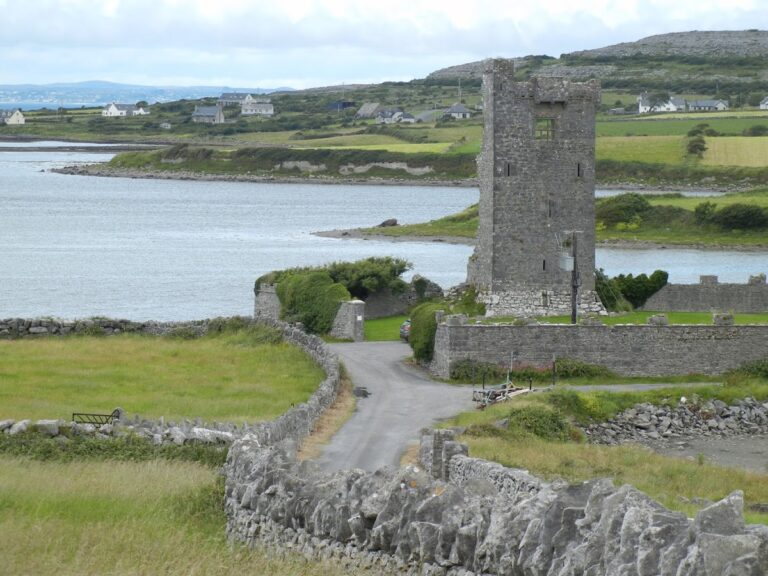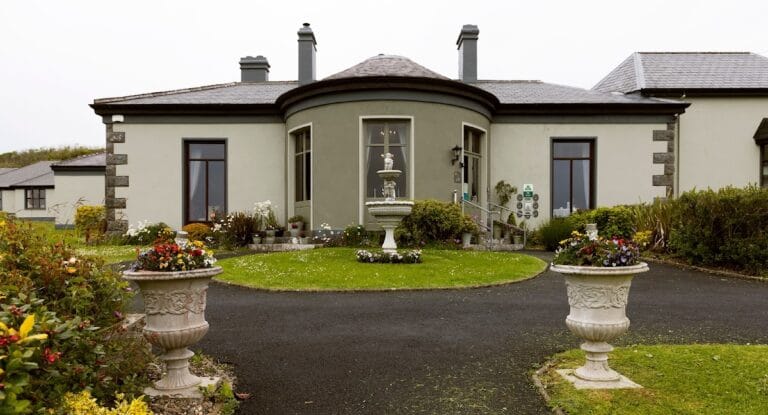Newtown Castle: A Historic Tower House in County Clare, Ireland
Visitor Information
Google Rating: 4.5
Popularity: Low
Google Maps: View on Google Maps
Official Website: www.newtowncastle.com
Country: Ireland
Civilization: Unclassified
Remains: Military
History
Newtown Castle is located in Newtown, a settlement in County Clare, Ireland, and was originally constructed by the Gaelic O’Brien clan in the mid-16th century, around 1550. This fortified tower house formed part of the clan’s holdings in the region and appears in historical records, such as the 1641 Forfeitures and Distribution documents, where Donogh O’Brien is listed as the owner.
Following this period, the castle came under the control of the O’Lochlainn (also spelled O’Loghlen) family, who were prominent in the nearby Burren area. By the early 19th century, Charles O’Loghlen was noted as living at Newtown Castle. Locally, he earned the title “King of the Burren” in recognition of his status. Later in the 19th century, Peter O’Loghlen, known as the “Prince of the Burren,” made the castle his residence, indicating the family’s continued regional influence.
In 1848, the castle and its surrounding lands changed hands when the financially troubled Marquess of Buckingham sold the property. Richard Samuel Guinness acted on behalf of Colonel Henry White in this transaction. Nearby, a rectory built around 1820 stood adjacent to the castle and was home to Reverend Hugh B. Howlett during the 1850s.
During restoration work in the early 1990s, limited archaeological investigations uncovered evidence pointing to a significant historical settlement near the castle. These findings included remains of animals and shellfish as well as a large cobbled area, suggesting that the name “Newtown” may originally have referred to a community established in proximity to the castle rather than to the tower house itself.
In the 20th century, specifically in 1993–94, Newtown Castle underwent restoration and was adapted for new uses. It became the site of the Burren College of Art, officially opened in 1994 by then-President Mary Robinson. Since then, the castle has been used as a venue for education, as well as hosting various events.
Remains
Newtown Castle is a distinctive tower house characterized by its unusual combination of a cylindrical upper structure resting upon a square pyramidal base. This architectural design is unique within Ireland, setting the castle apart from the majority of Irish tower houses, of which only about 30 are round in shape among roughly 3,000 examples.
The tower rises through four floors above ground. The ground and first floors feature vaulted ceilings constructed using a traditional Irish method where woven hazel rods (flexible branches) were placed beneath layers of wooden laths and secured with mortar mixed with animal blood. This technique created a strong support for the stone floors laid above. The walls at the base are notably thick, approximately four meters, and the large thickness provided cool storage space on the ground floor.
Defensive elements include small gun-loops on the first floor which would have allowed defenders to fire weapons while remaining protected. Windows throughout the tower are narrow and stone-framed, incorporating shooting slits that face in every direction, allowing for a wide field of view and defense. A doorway on the second floor once connected the tower to an adjoining building, now no longer standing, and was accessible by ladder or rope roughly ten meters in length.
The third floor comprises a spacious hall with an elegant balcony and windows oriented toward the four cardinal points. From here, occupants could look out over Galway Bay and the surrounding Burren landscape, providing extensive views and underscoring the prominence of the O’Loghlen family. The uppermost section of the tower was restored with a conical oak roof as part of the 1993–94 renovation efforts.
Inside, the first floor contains a restored open fireplace featuring a rectangular limestone lintel, reflecting the domestic use of the space. The second floor, known as the Scriptorium, serves as a display area for high-quality reproductions of important medieval Irish manuscripts, including the Egerton 88 legal manuscript and the renowned Book of Kells. This highlights the local historical tradition of learning and law associated with the region.
Externally, the base of the tower is supported by projecting buttresses that expand the structure’s footprint into a square pyramid shape. These buttresses provide a stable foundation for the circular upper tower and enhance its defensive capabilities.
Together, these features illustrate both the practical and symbolic roles Newtown Castle played from its construction in the 16th century through to the present day.










